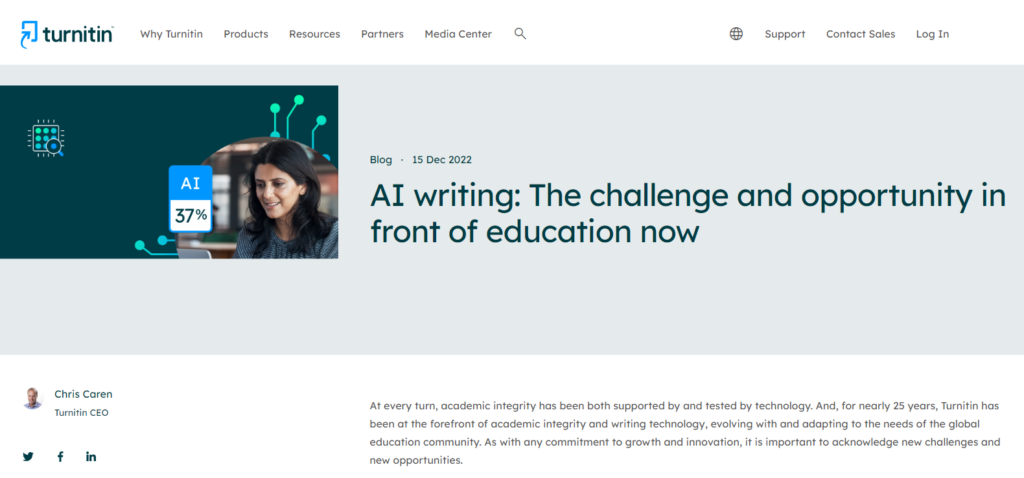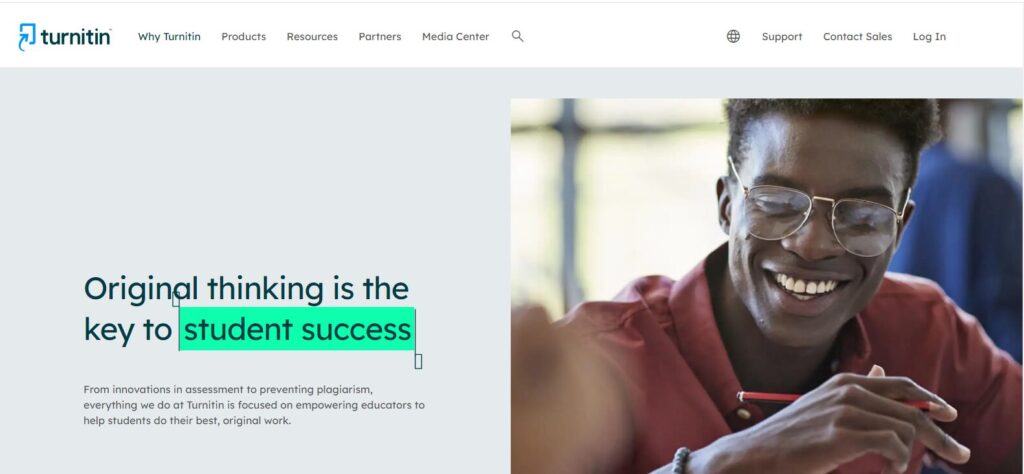In today’s digital age, academic integrity faces new challenges with the emergence of AI writing tools. As educators, it is important to ensure that students’ work is their own and not generated by AI. Turnitin, a leading academic integrity platform, has launched an AI detection feature to help educators identify when AI authoring tools like ChatGPT have been used on student submissions. In this article, we’ll walk you through how to effectively use Turnitin’s AI detection tools to strengthen academic integrity and maintain a fair learning environment.
Understanding Turnitin’s AI Detection Tool
Turnitin’s AI detection tools provide educators with valuable insight into the authenticity of student submissions. It helps identify AI-generated content in tools like ChatGPT and provides powerful reporting capabilities to guide educators’ decision-making process. Turnitin integrates AI writing detection into your similarity checking workflow to ensure a seamless experience for educators within your learning management system (LMS).




Access Turnitin’s AI Detection Reports
To access AI detection reports:
Select the name of the assignment using Turnitin in your LMS.
Open the student’s submission using SpeedGrader.
Click the colored box for the similarity score to open the student’s submission in Turnitin.
View student submissions in Turnitin in an external window.
Interpret results from AI detection reports
Turnitin recommends that educators interpret AI detection report data for English prose and paragraphs, excluding lists, outlines, short questions, and poetry. This report provides analysis of AI-generated text so educators can determine the extent of AI use in student submissions.




It’s important to note that Turnitin’s AI detection is an evolving technology, so caution should be used when interpreting results. This tool can sometimes mark original writing as AI-generated text, so it should be used as one of many tools for assessing student work. Educators must consider their relationships with individual students and their knowledge of their writing abilities to make informed decisions.
Best practices for using Turnitin’s AI detection tools
To get the most out of Turnitin’s AI detection tools, consider these best practices:
Perform writing diagnostics: Obtain samples of the student’s handwriting to compare with the results detected by AI. This helps validate the results and ensure an accurate assessment.
Use AI detection as an assistive tool: AI detection tools are valuable, but they should not be the sole basis for judging academic integrity. To make a comprehensive evaluation, consider other factors, such as the quality and consistency of the writing.
Stay informed: Stay up-to-date with Turnitin resources, including FAQs, guides, and videos, to fully understand the capabilities and limitations of our AI detection tools.
Turnitin’s Commitment to Academic Integrity
Turnitin is committed to helping educators maintain academic integrity in the age of AI writing. Through continuous innovation and collaboration with students and educators, Turnitin aims to provide equitable access to AI tools while ensuring fair assessment practices. The Turnitin AI Innovation Lab continues to explore new developments in AI write detection and works to solve complex problems related to AI-generated content.
Does Turnitin’s AI detection tool only apply to English submissions?
Turnitin’s AI detection tools are primarily designed for English prose and paragraphs. AI-generated content may not be accurately detected in other languages or non-sentential structures.
Can Turnitin’s AI detection tool flag poetry or non-sentence structures?
No, Turnitin’s AI detection tool focuses on identifying blocks of text written with standard grammatical sentences. It does not flag poems, lists of any type, or other non-sentential structures.
How can educators ensure fair assessments despite the limitations of AI detection?
Educators should consider a holistic approach to assessment, including factors such as writing quality, consistency, and individual student relationships. AI detection should be used as an auxiliary tool, not the sole factor in determining academic integrity.
conclusion
Turnitin’s AI detection tool helps educators identify AI-generated content in student submissions, strengthening academic integrity in the era of AI writing. By following the steps outlined in this article and considering best practices, educators can effectively utilize Turnitin’s AI detection capabilities to maintain equitable learning environments. Get information, perform writing diagnostics, and make an informed assessment using AI detection as an assistive tool. Together, we can ensure academic integrity and support student growth in the digital age.


